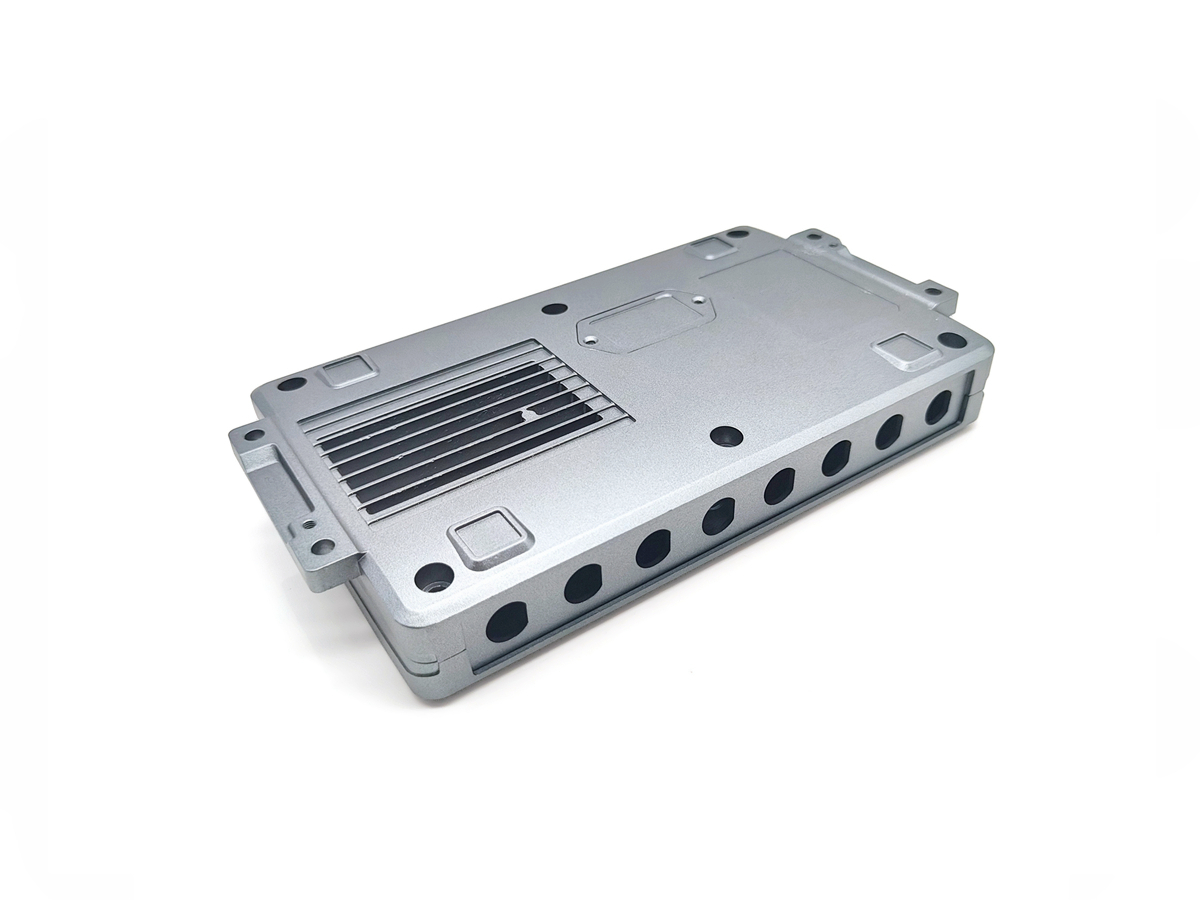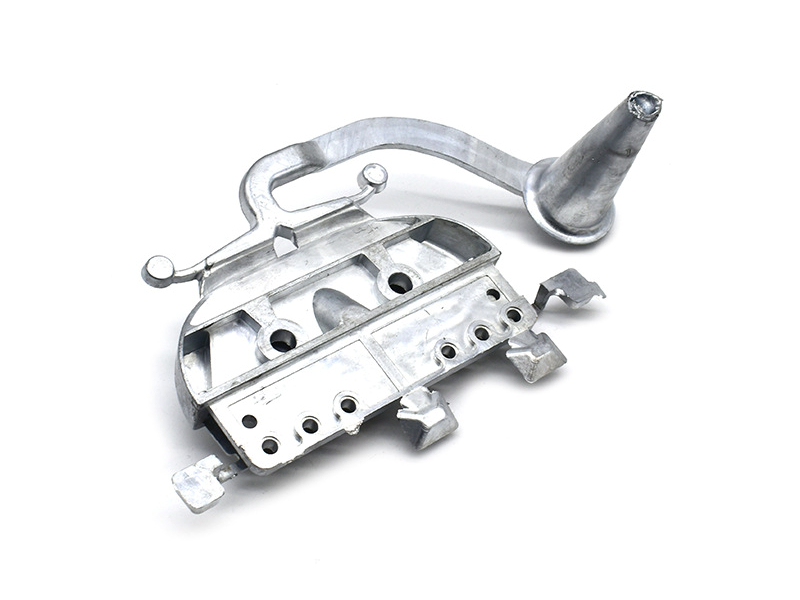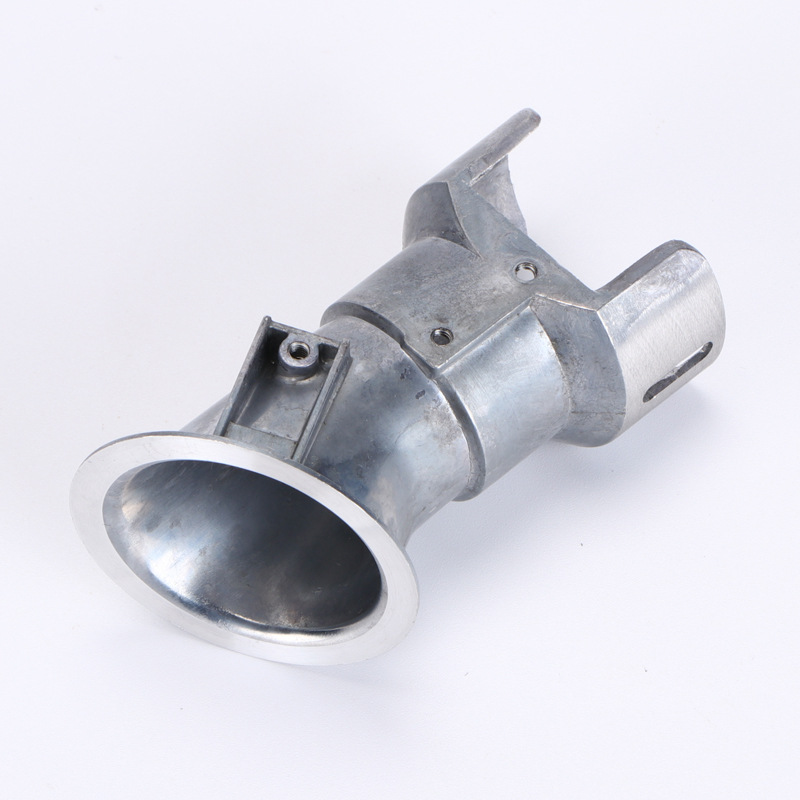Zamak 7
Zamak 7 is a high-performance zinc alloy with superior corrosion resistance, excellent casting characteristics, and dimensional stability. It is an ideal material for die casting applications where long-term durability and resistance to environmental factors are essential. Zamak 7 is typically used in applications where a combination of strength, fine surface quality, and corrosion protection is required.
At Neway, we offer precision Zamak 7 die casting services, ensuring the highest quality and performance for parts requiring high mechanical strength and superior environmental resistance.
Description
Zamak 7 is a high-performance zinc alloy designed for die casting applications that demand superior corrosion resistance, strength, and dimensional accuracy.
Key Characteristics of Zamak 7
Zamak 7 is a high-strength zinc alloy with low copper content, which enhances its corrosion resistance compared to other Zamak alloys like Zamak 3 and Zamak 5. It provides excellent fluidity for precision die casting, especially in complex geometries, while maintaining strong mechanical properties.
Property | Value (Typical, As-Cast) |
|---|---|
Density | 6.7 g/cm³ |
Ultimate Tensile Strength | ~350 MPa (50,750 psi) |
Yield Strength | ~220 MPa (31,900 psi) |
Elongation at Break | ~1.5% |
Thermal Conductivity | ~115 W/m·K |
Coefficient of Thermal Expansion | ~22.5 µm/m·°C |
Brinell Hardness | ~85 HB |
Corrosion Resistance | Excellent (higher than Zamak 3) |
Zamak 7 is particularly well-suited for applications that demand high precision, strong mechanical properties, and excellent protection against corrosion, making it suitable for outdoor, marine, and automotive environments.
Chemical Composition of Zamak 7
Element | Composition (wt%) |
|---|---|
Zinc (Zn) | 96.0–97.5% |
Aluminum (Al) | 3.0–4.0% |
Copper (Cu) | 0.2–0.3% |
Magnesium (Mg) | ≤ 0.05% |
The reduced copper content in Zamak 7 enhances its corrosion resistance, especially in environments where parts are exposed to saltwater or humid conditions.
Mechanical Properties of Zamak 7 Zinc Alloy
Zamak 7 is known for its strong mechanical properties and ability to maintain performance under stress, even in tough environmental conditions.
Property | Value (As-Cast) |
|---|---|
Ultimate Tensile Strength | ~350 MPa (50,750 psi) |
Yield Strength (0.2% offset) | ~220 MPa (31,900 psi) |
Elongation at Break | ~1.5% |
Fatigue Strength (10⁸ cycles) | ~150 MPa (21,750 psi) |
Modulus of Elasticity | ~70 GPa |
Brinell Hardness | ~85 HB |
Zamak 7 provides an excellent balance of strength, ductility, and impact resistance, making it ideal for precision applications requiring both mechanical durability and fine surface quality.
Benefits of Using Zamak 7 in Die Casting
Superior Corrosion Resistance: Zamak 7 excels in environments with moisture, salt, or chemicals. It provides enhanced resistance to corrosion, especially compared to other Zamak alloys like Zamak 3 and Zamak 5.
High Strength-to-Weight Ratio: The alloy offers excellent strength and durability, combined with the lightweight benefits of zinc, making it ideal for load-bearing applications.
Precision Castability: Excellent fluidity and dimensional stability ensure that even the most intricate and thin-walled parts can be produced with high precision.
Good Machinability: Zamak 7 is easy to machine, allowing for precise post-processing and finishing with minimal tool wear.
Thermal Resistance: Suitable for parts that operate at moderate to high temperatures without sacrificing strength.
Typical Applications of Zamak 7 Die Cast Parts
Due to its high corrosion resistance and mechanical strength, Zamak 7 is often used in applications requiring both durability and aesthetic qualities. Common applications include:
Automotive: Transmission parts, engine components, and heat exchangers
Marine: Seawater-resistant components such as valve bodies, marine pumps, and fasteners
Electrical: Housings for electrical connectors, power supply enclosures, and junction boxes
Industrial Equipment: Pump components, valve bodies, and machinery parts exposed to chemicals
Consumer Goods: Outdoor lighting fixtures, garden tools, and sporting goods
Zamak 7’s excellent corrosion resistance and mechanical properties make it ideal for industries where parts are exposed to harsh conditions, such as automotive, marine, and outdoor electronics.
CNC Machining Considerations for Zamak 7
Zamak 7 is known for its good machinability, although it is recommended to use carbide or TiAlN-coated carbide tools due to its copper content, which can cause tool wear over time.
Machining Recommendations:
Tooling: Carbide or TiAlN-coated carbide tools are best suited for machining Zamak 7 to minimize tool wear.
Cutting Speed: Milling: 250–500 m/min; drilling: 100–150 m/min
Feed Rate: 0.05–0.15 mm/rev, depending on the tool and feature size
Coolants: Use water-soluble or synthetic coolants to ensure optimal heat dissipation and improve tool life.
Surface Finish: Ra ≤ 1.6 µm achievable for functional or aesthetic finishes
Tolerance: ±0.03 mm achievable on critical features
Neway’s CNC machining offers advanced capabilities for machining Zamak 7 parts, ensuring high-precision tolerances and excellent surface quality.
Surface Treatments for Zamak 7 Parts
Zamak 7 can undergo several surface treatments to further improve its corrosion resistance, wear resistance, and appearance:
Anodizing: Ideal for enhancing the alloy's corrosion resistance, especially in outdoor or marine applications.
Powder Coating: Adds extra protection and color, making it ideal for parts exposed to harsh weather conditions.
Painting: UV-resistant coatings for components exposed to sunlight or extreme conditions.
Tumbling: Used to deburr and smooth parts before finishing or coating.
All surface treatments are tested for durability and compliance with standards such as ISO 2409 (adhesion) and ASTM B117 (salt spray testing).
Why Choose Neway for Zamak 7 Die Casting?
Neway provides full-service Zamak 7 die casting solutions, from design for manufacturability to precision machining and high-volume production. We produce high-strength, corrosion-resistant parts with precise tolerances and excellent post-casting finishes.
FAQs:
How does Zamak 7 compare to Zamak 3 regarding corrosion resistance and strength?
Can Zamak 7 die cast parts be anodized or powder-coated effectively?
What industries use Zamak 7 for precision die casting?
What machining techniques are most effective for Zamak 7?
What are the main applications of Zamak 7 in the automotive and marine industries?



